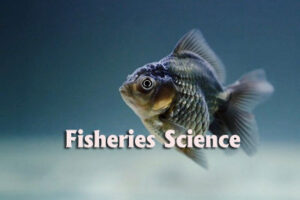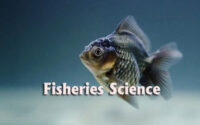Model Questions on Fisheries Science
Interested users can download the Model Questions on Fisheries Science from the links enclosed below. Download the Last 5 Years Model Questions on Fisheries Science Solved along with the Answers of each question.

This Model Questions on Fisheries Science may vary from the Actual paper. Use the Model Questions on Fisheries Science as a reference for the exam preparation. Check the Model Questions on Fisheries Science from this page.
At the bottom of this page, you will find ‘Click here links’ for downloading the Model Questions on Fisheries Science. Click on the required link & download your related Model Questions on Fisheries Science to make as a reference for your scheduled preparation.
Fisheries Science Model Questions Paper
1. Which of the following is a crustacean parasite infesting fish is?
(a) Gyroductylus
(b) Argulus
(c) Dactyrogyrus
(d) Hexamita
2. The most important biochemical changes associated with freezing of fish is:
(a) Protein denaturation
(b) Freezer burn
(c) Gapping of fillet
(d) Crystallization
3. Which one is 22nd Amino Acid?
(a) Pyroflavine
(b) Skatole
(c) Gamactene
(d) Pyrrolysine
4. Which of the following is Portugese-man- of-war?
(a) Physalia
(b) Euphasids
(c) Sagittal
(d) None of these
5. For gill net…….type of twist are used:
(a) Soft twist
(b) Extra hard twist
(c) Hard twist
(d) All of these
6. Koi Carp Herpes virus is:
(a) DNA virus
(b) IPNV virus
(c) RNA virus
(d) SVC virus
7. Which of the following is not an ectoparasite?
(a) Argulus
(b) Trichodina
(c) Hexamita
(d) Dactyrogyrus
8. Fish muscle protein denaturation is due to changes in:
(a) Sarcoplasmic protein
(b) Stroma protein
(c) Myofibrillar protein
(d) Myogen
9. White Tail Disease (WTD) is caused by:
(a) Bacteria
(b) Fungus
(c) Virus
(d) Parasite
10. Body’s energy crisis favour:
(a) Gluconeogenesis
(b) Glycolysis
(c) Glycogenesis
(d) None of these
11. Prostaglandins are
(a) Hormones
(b) Eicosanoids
(c) Enzymes
(d) None of these
12. The causative agent of disease that can be transmitted from brood stock:
(a) IPV
(b) Both (a) & (c)
(c) WSSV
(d) None of these
13. Antibodies are produced by:
(a) Lymphocytes
(b) Thrombocytes
(c) Leucocytes
(d) All of these
14. Aeromonas salmonicida causes :
(a) Enteric red mouth disease
(b) Red pest
(c) Saddleback disease
(d) Furunculosis
15. An antioxidant occur naturally in fish:
(a) Creatin
(b) BHA
(c) Anserine
(d) Carnosine
16. CIFAX is mainly used for the treatment of :
(a) EUS
(b) Vibriosis
(c) Argulus
(d) Gill fluke
17. The spoilage rate get double for every…..increase in temperature
(a) 4.5°C
(b) 5.5°C
(c) 5°C
(d) 10°C
18. The most important bacteria which produce histamine from histidine
(a) Hafnia sp
(b) Pseudomonas sp
(c) Klebsiella sp
(d) Morganella sp
19. The length at which 50% of the fish are caught is known as:
(a) Length at first maturity
(b) Length at first capture
(c) Age at first maturity
(d) None of these
20. The lower limit of growth for bacteria, yeast or mould is considered as :
(a) -15°C
(b) -7°C
(c) -20°C
(d) -5°C
21. The disease ‘Saprolegniasis’ is caused in fish due to:
(a) Bacterial infection
(b) Nutritional disease
(c) Fungal infection
(d) Parasitic infection
22. Without which of the following staining agent Gram staining can also be performed?
(a) Crystal violet
(b) 95% alcohol
(c) Gram’s Iodine
(d) Safranine
23. In tropical fishes, age could be calculated from:
(a) Vertebra
(b) Length frequency analysis
(c) Otolith
(d) All of these
24. The parasitic life cycle of Diplostomum is completed in :
(a) Fish
(b) Mollusc
(c) Crab
(d) Bird
25. Intracellular viral replication is inhibited by :
(a) Interferon
(b) Cytokines
(c) Sideropore
(d) Transferrin
More Question Set for Fisheries
26. Haematocit is the ratio of ………………to the total blood volume
(a) Haemoglobin
(b) WBCs
(c) Platelets
(d) Cellular fraction
27. A major phospholipids present in muscle of marine fish and shrimp is:
(a) Squalene
(b) Astacene
(c) Pristine
(d) Lecithin
28. The process of conversion of glycogen into glucose is called :
(a) Glycogenolysis
(b) Glycogenesis
(c) Glycolysis
(d) Gluconeogenesis
29. IMViC test is a confirmatory test for:
(a) Salmonella
(b) E.coli
(c) Streptococcus
(d) Vibrio
30. Which type of mechanical dryer is most commonly used for dry fishes?
(a) Cabinet dryer
(b) Tunnel dryer
(c) Spray dryer
(d) Kiln dryer
31. Secondary oxidative rancidity product is :
(a) Measurement of peroxide
(b) Measurement of malonaldehyde
(c) Measurement of free fatty acid
(d) Measurement of glycerol
32. Vitamin pyridoxine is also known as :
(a) Vitamin D
(b) Vitamin E
(c) Vitamin B6
(d) Vitamin B7
33. The action of most of the spoilage bacteria is preventing at……salt concentration level
(a) 3 %
(b) 15 %
(c) 10 %
(d) 20 %
34. White spot formation in salt cured fish is due to formation of :
(a) Disodium hydrogen phosphate
(b) Dimagnesium hydrogen phosphate
(c) Dipotassium hydrogen phosphate
(d) Dicalcium hydrogen phosphate
35. The carcinogenic compound present in wood is :
(a) Guaiacol
(b) Benzopyrene
(c) Phenol
(d) Formaldehyde
36. The basic sampling unit for fish population dynamics is:
(a) Species
(b) Stock
(c) Population dynamic
(d) Cohort
37. Find out the aromatic amino acid :
(a) Alanine
(b) Methionine
(c) Histidine
(d) Phenylalanine
38. When the area of haemorrhage is less than 1-2 mm, then it is called:
(a) Ecchymotic
(b) Hematoma
(c) Petechiae
(d) Painbrush
39. The salt curing method where gills and guts are pulled out through the mouth cavity is called :
(a) Kench curing
(b) Wet curing
(c) Pickling
(d) Mona curing
40. White spot disease is caused by :
(a) Icthyophthirius sp
(b) MrNV virus
(c) Ichthyobodo sp
(d) IPNV virus
41. The headquarter for fish and fish products under Codex commission is located in :
(a) U.K
(b) HUNGARY
(c) NORWAY
(d) U.S.A
42. The test which is used to quantify and detect very small amount of Amino Acid is :
(a) Ninhydrin reaction
(b) Xanthoproteic reaction
(c) Maillard reaction
(d) Biuret reaction
43. The time required to kill a particular bacteria at a particular temperature is called :
(a) Z-value
(b) F-value
(c) D-value
(d) None of these
44. Metallothionin is a protein which is rich in :
(a) Methionine
(b) Cysteine
(c) Histidine
(d) None of these
45. ‘Case hardening’ is a phenomenon occurs in …………condition.
(a) High temp & high RH
(b) Low temp & low RH
(c) High temp & low RH
(d) Low temp & high RH
46. Coagulase test is a confirmatory test for :
(a) Streptococcus sp
(b) Shigella sp
(c) Staphylococcus sp
(d) E.coli
47. The most widely used freezer for freezing seafood in Indian and abroad is :
(a) Air blast freezer
(b) Fluidized bed freezer
(c) Immersion freezer
(d) Contact plate freezer
48. COBB’s value is used to indicate :
(a) Light penetration
(b) Water proofness
(c) Temperature insulation
(d) Anaerobic condition
49. The most effective preservative for canned foods is :
(a) MSG
(b) Glucose
(c) Sucrose
(d) Nisin
50. The term ‘Bio-chemistry’ is coined by :
(a) Wilhem Kuhne
(b) Carl Neuberg
(c) B. Franklin
(d) Neelson

